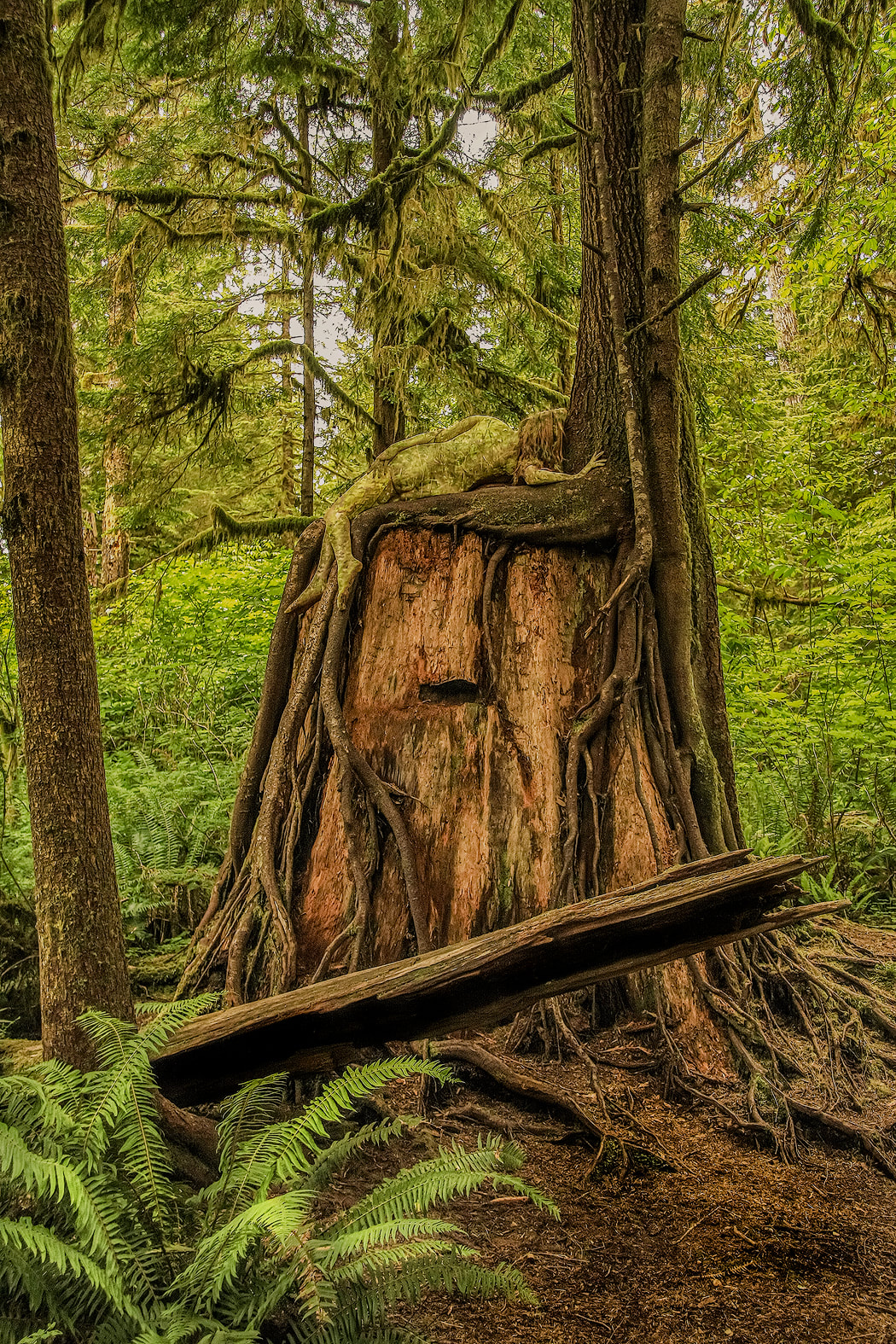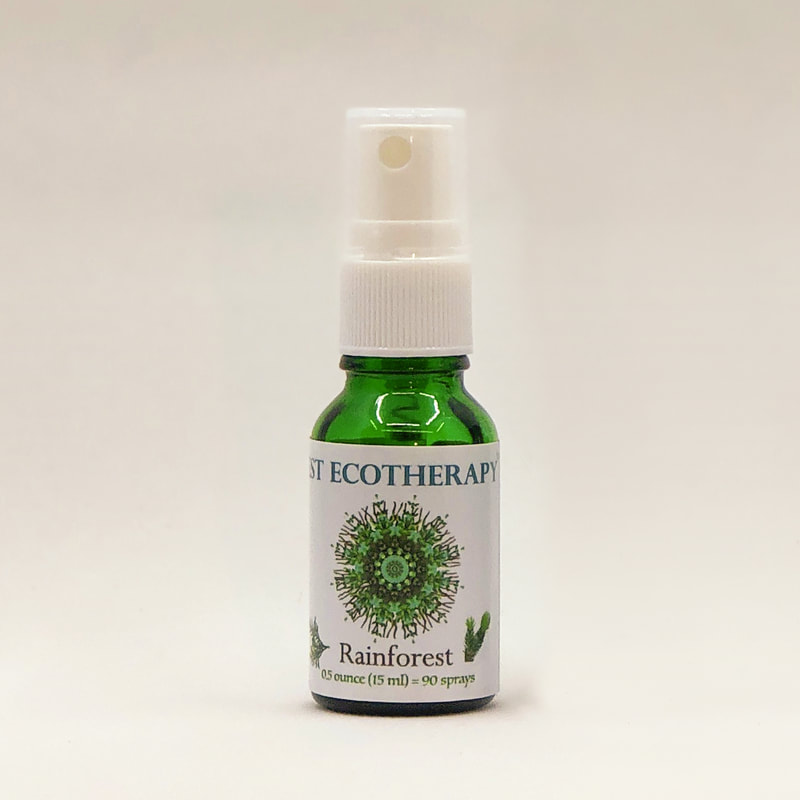Western Hemlock – Tsuga heterophylla
Natural History
|
|
Other Names: West Coast Hemlock, Pacific Hemlock, sisku'pas (Cowlitz), klak!a'bupt (Makah), t!kadt' (Snohomish).
Distinctive Characteristics: This tall, evergreen conifer with dense short-needled foliage forms a conical shape with a distinctive, strongly drooping leader and branch tips. Older trees become cylindrical and may have no branches in the lowest 100–130 ft. (30–40 m). Their dangling cones are small, about 1 in. (1.5–2.5 cm). In the rainforest, the opportunistic Hemlock reproduces by seed, commonly establishing itself on decaying logs, producing an aggressive root system that is adept at scavenging nitrogen from dead wood. The root system is also covered in mycorrhizae-forming fungi that aid in its reproduction. Nurse logs such as the Douglas Fir decompose underneath the cascading root systems of Western Hemlock as they establish themselves, resulting in a root system that is stilted above the ground. Distribution: Native along the western U.S. in Alaska, Washington, Oregon and California in coastal regions and separately inland in Montana and Idaho. In Canada it is found in British Columbia and Alberta. Elevation: sea level to 5,900 ft. (1,800 m). Ecosystem: A shade-tolerant understory tree in low-to mid-elevation, common in temperate coastal rainforests, found mostly with Douglas Fir, Sitka Spruce, Western Redcedar, and Coast Redwood. It also grows alongside Pacific Silver Fir, Paper Birch, Mountain Hemlock, Engelmann Spruce, Western Larch, Grand Fir, Western White Pine, Lodgepole Pine, Red Alder, Black Cottonwood, Port Orford Cedar, Noble Fir, Big Leaf Maple, Alaska-cedar, Incense Cedar, Tanoak, Sugar Pine, California Bay Laurel, Subalpine Fir, Ponderosa Pine, and Pacific Yew. Maximum Age: Recorded at 1,238 years. Maximum Height and Girth: 271.7 ft. (83 m) in height; 28.5 ft. (8.6 m) in circumference. Animal Community: Old-growth Western Hemlock stands provide hiding, habitat, and thermal cover for many wildlife species, including small mammals such as the northern flying squirrel, deer mice and red tree vole, as well as large mammals. It is also an important browse species for Roosevelt elk and black-tailed deer in coastal Oregon, Washington, and British Columbia. Rabbits and snowshoe hare clip off the main stems of western hemlock seedlings, as do mountain beavers. Many bird species also call Western Hemlock forests their home. The northern spotted owl in Washington and Oregon and barred owls in British Columbia depend on Hemlock-dominated forests. Nesting bird species such as the yellow-bellied sapsucker and northern three-toed woodpecker use cavities in trees for nesting. Traditional Uses: Medicine: The needles, inner and outer bark, and sap were all used medicinally in various ways: As an antirheumatic (Bella Coola, Hesquiat), tuberculosis remedy (Chehalis, Shuswap, Klallam, Hesquiat), antihemorrhagic (Klallam, Nuu-chah-nulth, Cowlitz), heart medicine (Bella Coola), eye medicine (Cowlitz), gastrointestinal aid (Gitksan), appetite stimulator (Klallam), cold and flu remedy (Quileute, Thompson) antidiarrheal (Kwakiutl), burn dressing (Bella Coola, Kwakiutl), birthing aid (Kwakiutl), dermatological aid (Cowlitz, Kwakiutl, Nitinaht, , Quileute, Bella Coola), disinfectant, and antiparasite (Makah). New needle growth was eaten or made into a bitter tea, rich in vitamin C. An infusion of the inner bark or twigs was also used in the treatment of kidney or bladder problems, as well as a gargle for mouth and throat problems. The sap was mixed with deer tallow as a salve to prevent sunburn (Hesquiat, Makah). A moxa of the twigs was burned to eliminate warts (Kwakiutl). Food: The inner bark was prepared and pressed into cakes for preservation, eaten as a staple food (Gitksan and Haisla) and as an emergency food (Haida, Bella Coola, Haisla, Hanaksiala, Kitasoo, Nitinaht, Tsimshian, Oweekeno, Coast Salish, Wet'suwet'en, Nuxalk). Small branch tips were used as flavoring when cooking meat (Cowlitz). Tools and Objects: Many tribes used the boughs to collect herring eggs from the bottom of waterways during the spring (Tlingit, Bellabella, Haisla, Hanaksiala, Hesquiat, Kitasoo, Klallam, Nitinaht, Makah). The bark was used as a tanning agent and dye (S'Klallam, Lummi, Makah, Quileute, Snohomish, and Chehalis), and a red dye was made from the bark to color basket materials and mountain goat wool (Coast Salish). Various tribes dyed fishnets brown to make them invisible to fish (Chehalis, Hesquiat, Nitinaht, and Bella Coola). The easily carved wood was made into implements such as spoons, roasting spits, combs, spear shafts, children's bows and elderberry picking hooks. Large feast bowls were carved from the wood of bent trunks (Haida). Art and Ceremony: Boughs used with other plants for ritual purification and protection (Haisla, Kwakiutl, Oweekeno, Nitinaht, Hesquiat and Hanaksiala). Wood knots were used to make jewelry for women of high social rank (Hanaksiala). The wood was used to carve ritual masks (Southern Kwakiutl). Shelter: Boughs were used as a temporary building material for hunters, fishers, shamans and their initiates, and for girls following their first menstruation (Kwakwaka'wakw, Oweekeno, Quinault, Haisla, Hanaksiala). Modern Uses: In the early days of modern logging, Hemlocks on both sides of the U.S. were regarded as trash trees and often discarded in favor of other species. As availability of these other species declined from exploitation, both Western and Eastern Hemlock soon gained importance as commercial resources. Today both are harvested for lumber for general construction, railroad ties, mine timbers, and marine pilings. The wood is also used to make boxes and crates, kitchen cabinets, flooring, veneer for plywood, paper pulp products, as well as in the manufacture of rayon, and cellophane. Threats and Conservation: Not threatened. |



